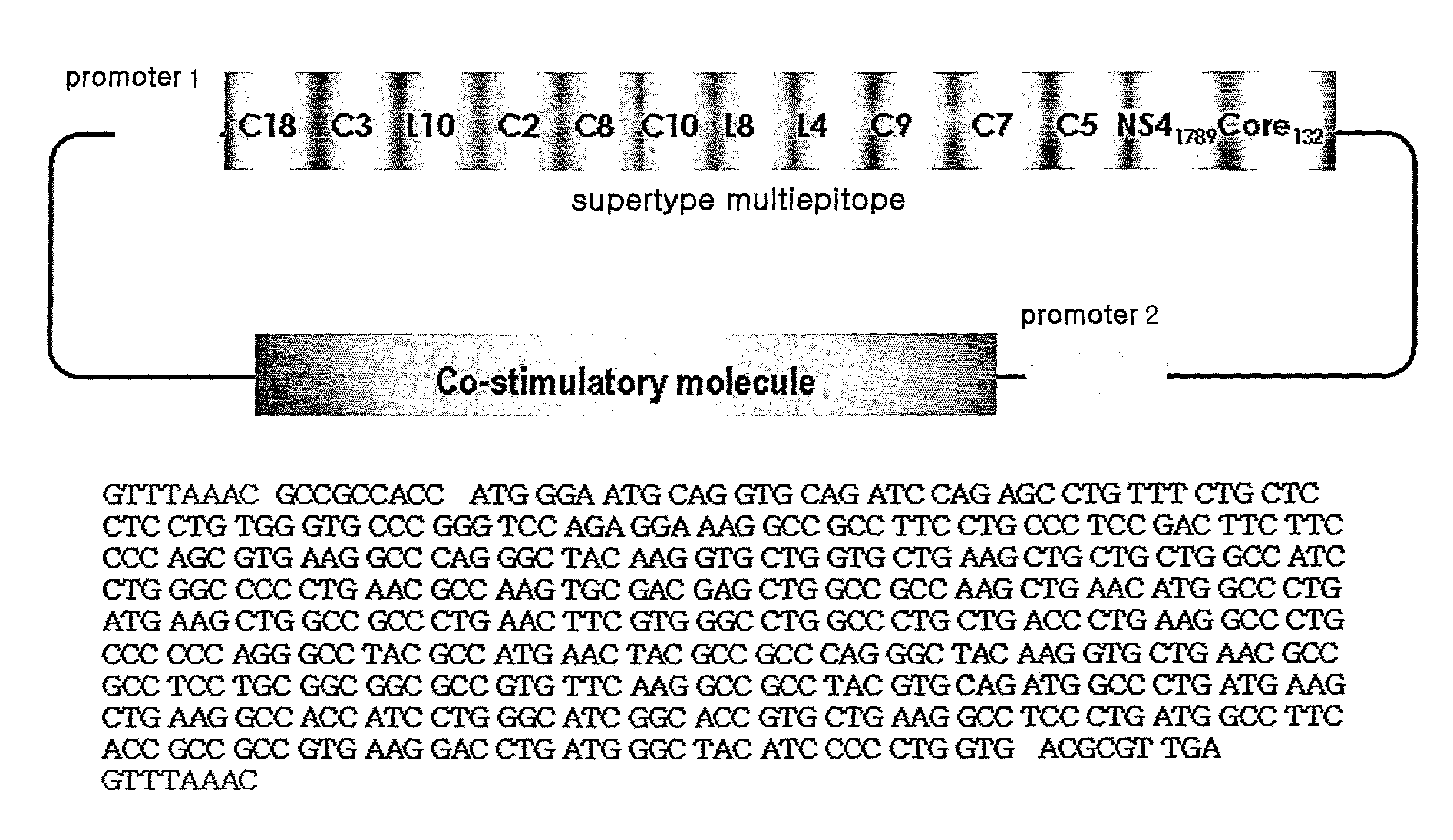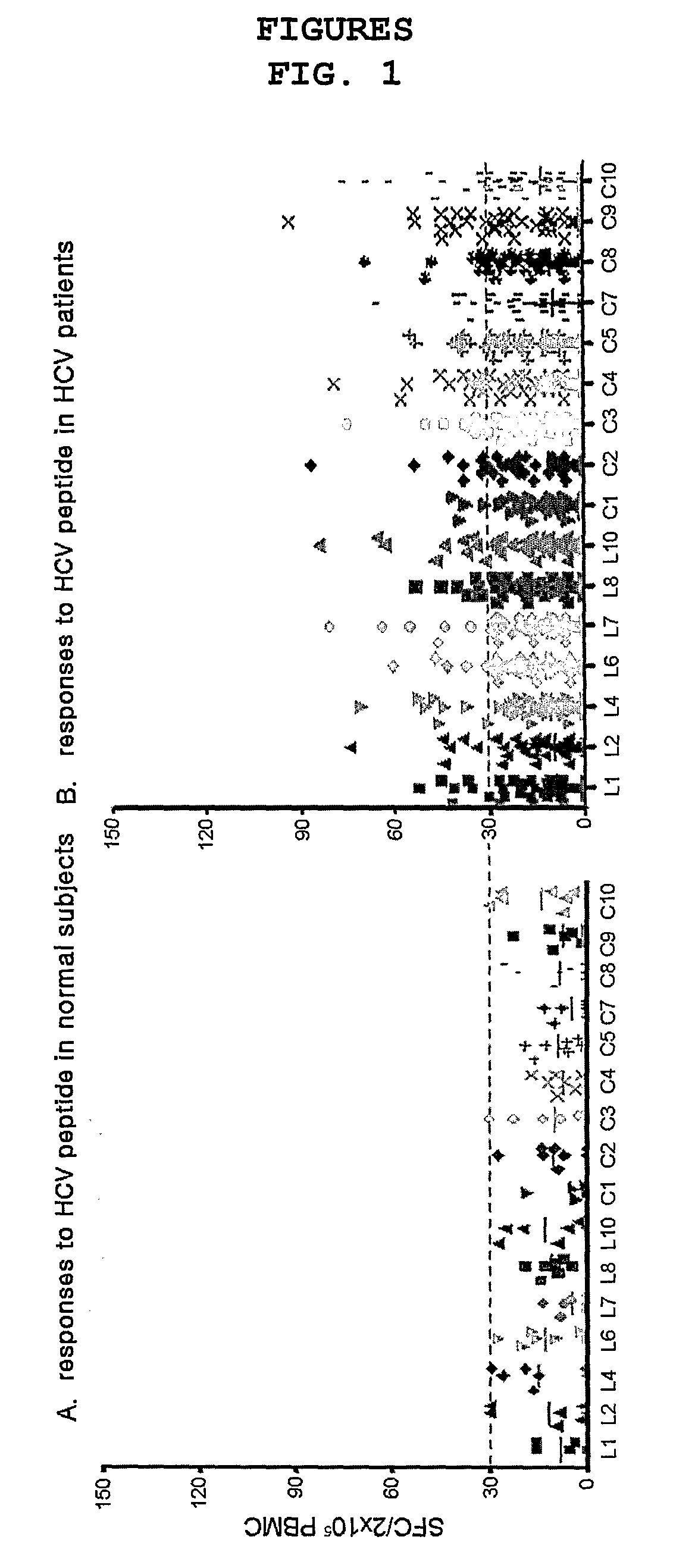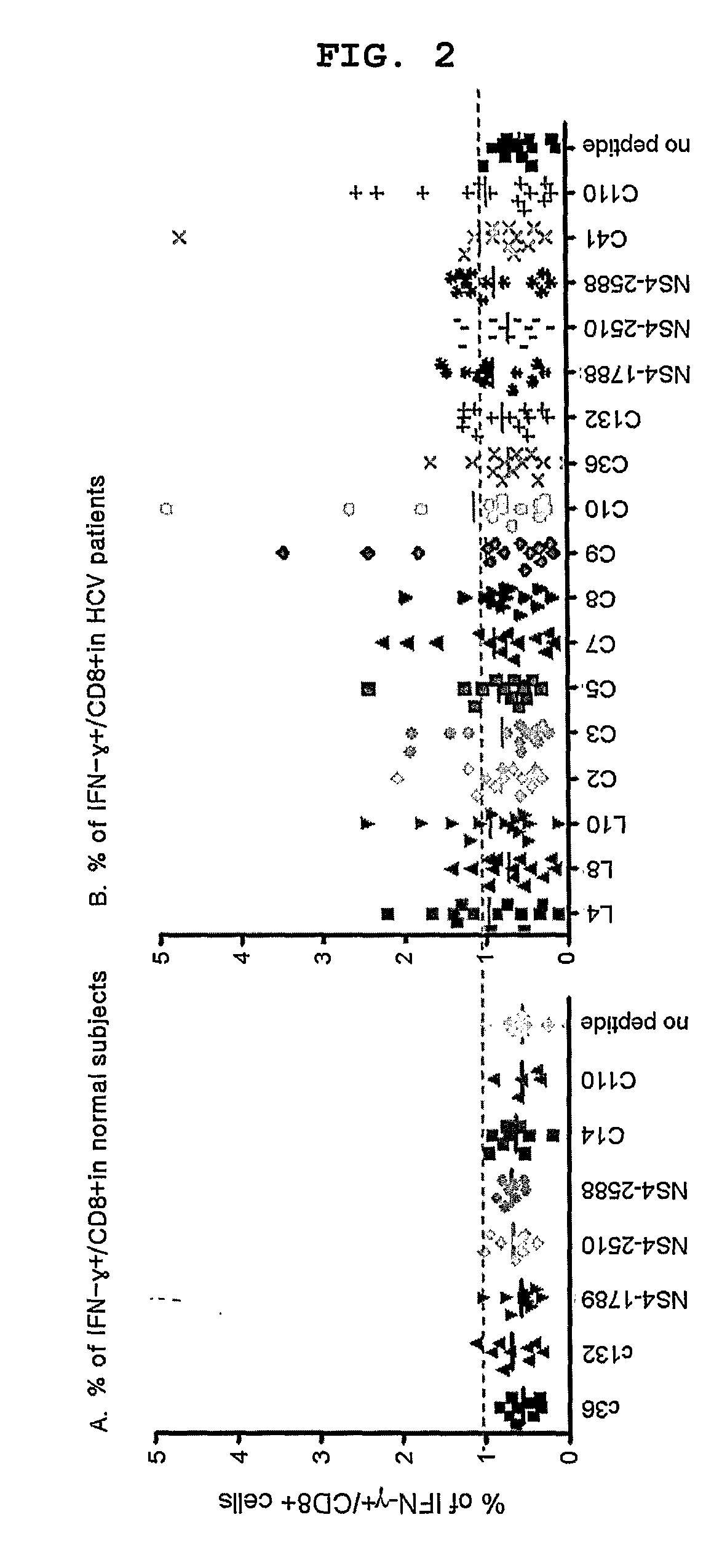Supertype Epitopes, Oligonucleotides Coding The Same Which Induce Effective Ctl Response Against Hcv And The Use Thereof
- Summary
- Abstract
- Description
- Claims
- Application Information
AI Technical Summary
Benefits of technology
Problems solved by technology
Method used
Image
Examples
example 1
Preparation of Supertype Epitope of HCV Promoting Cell-mediated Immune Response
[0076]Based on the fact that CTL recognizes short peptide composed of 8-11 amino acids which is bound with MHC, the present inventors prepared supertype epitope with 16 peptides each composed of 9 amino acids to promote cell-mediated immune response against HCV.
[0077]Precisely, based on well-known MHC binding motif, 16 epitopes represented by SEQ. ID. No 1-No 16, which were derived from conservative region of polyprotein of HCV and showed especially high binding capacity to 5 HLA-A molecules, A1, A2, A24, A26 and A3, and 6 HLA-B molecules, B7, B8, B15, B27, B44, and B51, were prepared. The amino acid sequence of each peptide above was identical to the sequence of HCV 1a and b sub-types, synthesized by Peptron Inc., Korea. The synthesized peptide was 95% purified by inverted HPLC, and dissolved in 100% DMSO at the concentration of 20 mg / ml. The solution was then diluted until the concentration reached 1 mg...
example 2
Binding Capacity of the Supertype Epitope to in Variety of MHC Types in HCV Patients
[0079]The bond between a peptide and a HLA molecule on cell surface providing an antigen is essential for T cell activation. To confirm whether or not 16 peptides produced in the above Example 1 could induce immune response by binding with various MHCs, experiments were performed with 99 HCV patients in Yonsei University Medical Center, Seoul, Korea. All of those patients were suffering from persistent HCV infection. Seroconversion containing an anti-HCV antibody of the patient was confirmed by HCV ELISA test system, and HCV RNA was detected by RT-PCR. ALT (alanine aminotransferase) activity of those infected patients was 6 fold higher, and patients with possible chronic liver disease by other causes were excluded. Blood taken from 8 healthy people who were not infected by HCV or HBV was used as a control. Class I HLA typing for all the experimental and control groups was carried out by SSP HLA DNA t...
example 3
Investigation of T Cell Immune Response by ELISPOT Assay Using PBMCs
[0085]In general, activated T cells induce the secretion of various cytokines by a sophisticated control system. CTL response to a specific antigen was monitored by enzyme-linked immunosorbent spot (ELISPOT) assay, which is the most sensitive and specialized method for the measuring the production of cytokine in a single cell. ELISPOT assay measuring the cellular immunity which promotes the secretion of cytokine interferon γ (IFN-γ) was applied in the present invention to investigate peptide-specific T cell immune response.
[0086]Particularly, PBMCs, stored after being isolated by the same method as described in the above Example 2, were thawed, and left at 37° C. in R-10 medium (RPMI 1640 medium containing 10% FCS, 2 mM L-glutamine, 50 U / ml penicillin and 50 μg / ml streptomycin) for overnight. The surface of a 96-well nitrocellulose plate (Millipore, USA) was loaded with 5 μg / ml of recombinant human anti-IFN-γ antibo...
PUM
| Property | Measurement | Unit |
|---|---|---|
| Length | aaaaa | aaaaa |
| Angle | aaaaa | aaaaa |
| Angle | aaaaa | aaaaa |
Abstract
Description
Claims
Application Information
 Login to View More
Login to View More - R&D
- Intellectual Property
- Life Sciences
- Materials
- Tech Scout
- Unparalleled Data Quality
- Higher Quality Content
- 60% Fewer Hallucinations
Browse by: Latest US Patents, China's latest patents, Technical Efficacy Thesaurus, Application Domain, Technology Topic, Popular Technical Reports.
© 2025 PatSnap. All rights reserved.Legal|Privacy policy|Modern Slavery Act Transparency Statement|Sitemap|About US| Contact US: help@patsnap.com



